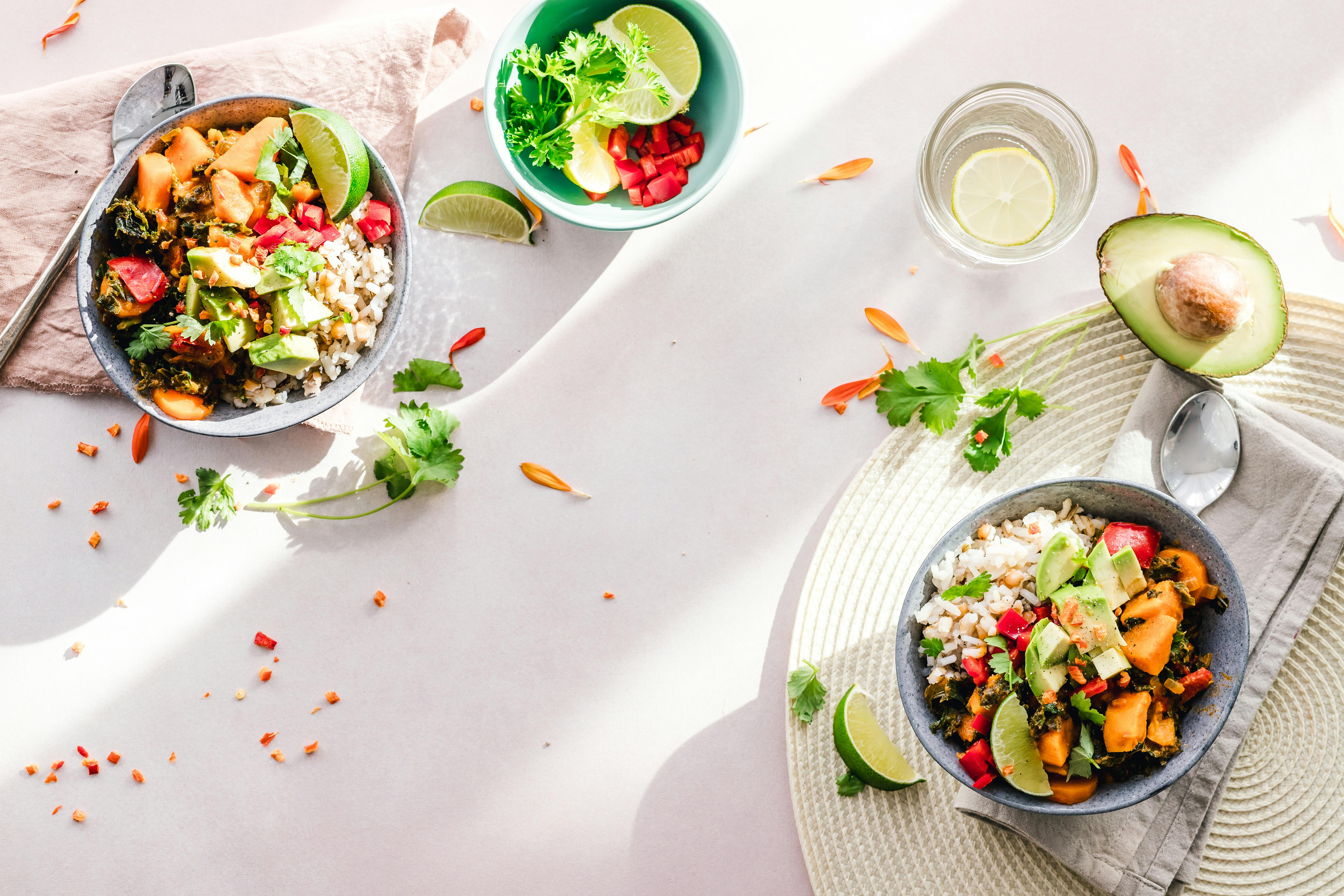- Introduction
- Understanding the Basics of a Healthy Plate with Whole Foods
- Practical Tips to Achieve a Healthy Plate with Whole Foods in 2025
- Maintaining Consistency and Overcoming Challenges
- Frequently Asked Questions about Healthy Plates with Whole Foods
- Conclusion
Introduction
Embracing a healthy plate with whole foods is more important than ever as we gear up for 2025. Making mindful choices about what we put on our plates can significantly impact our overall health and well-being. Incorporating more whole foods ensures we receive essential nutrients, fiber, and antioxidants that promote vitality.
In today’s fast-paced world, it can be challenging to prioritize nutritious meals, but small changes can lead to big improvements. A balanced, healthy plate with whole foods not only benefits our bodies but also supports sustainable eating habits. Let’s explore how you can effortlessly integrate this approach into your daily routine for lasting success.
Understanding the Basics of a Healthy Plate with Whole Foods
What Constitutes a Healthy Plate with Whole Foods?
A healthy plate with whole foods typically consists of a colorful variety of fruits, vegetables, whole grains, and lean proteins. It emphasizes natural, minimally processed ingredients that provide vital nutrients. Planning your meals around these components can create a satisfying and balanced diet.
Knowing what to include helps you avoid processed foods high in sugars, unhealthy fats, and artificial additives. By focusing on whole foods, you ensure your body gets the nutrients it needs to function optimally. This foundation supports overall health, energy, and long-term wellness.
The Benefits of Choosing Whole Foods
Opting for whole foods can improve digestion, boost immunity, and promote healthier weight management. These foods are naturally rich in vitamins, minerals, and fiber, which are essential for the body’s repair and maintenance processes. Over time, a diet centered on whole foods fosters sustainable health improvements.
Many people notice increased energy levels and better mental clarity when they reduce processed food intake and emphasize whole foods on their plates. Additionally, choosing whole foods supports environmental sustainability by reducing reliance on heavily processed, packaged items. Making the switch to a healthy plate with whole foods is a wise investment in your future health.
Practical Tips to Achieve a Healthy Plate with Whole Foods in 2025
Plan Your Meals Around Whole Food Groups
Start by designing your meals to include a variety of whole food groups like fruits, vegetables, whole grains, and lean proteins. Planning ahead helps you avoid last-minute unhealthy choices and ensures your plate remains balanced. For instance, consider preparing a quinoa salad with colorful veggies and grilled chicken.
Having a weekly meal plan can streamline your shopping list and reduce food waste. It also encourages you to experiment with diverse whole foods, keeping your diet interesting and nutrient-rich. Consistency in meal planning is key to maintaining a healthy plate with whole foods throughout 2025.
Shop Smart at Farmers’ Markets and Whole Food Stores
Purchasing directly from local farmers’ markets or specialty whole food stores ensures freshness and supports local agriculture. Look for vibrant, unprocessed products like berries, leafy greens, and whole grains. These sources often offer a wider variety of nutrient-dense options than conventional supermarkets.
Shopping with a list focused on whole foods helps you stay on track and avoids impulse buys of processed snacks. Learning to identify whole foods on labels and selecting organic when possible can elevate your healthy plate even further. Smart shopping is an essential step toward consistent healthy eating in 2025.
Prepare Meals with Minimal Processing
Cooking your own meals allows you to control ingredients and avoid unhealthy additives. Simple techniques like roasting, steaming, or sautéing preserve the nutrients of your whole foods. For example, oven-roasted sweet potatoes and steamed broccoli make a nutritious, delicious side.
Batch cooking and meal prepping save time and reduce the temptation to resort to processed convenience foods. Using herbs, spices, and natural oils enhances flavor without compromising health. Preparing meals this way helps you stay committed to a healthy plate with whole foods daily.
Maintaining Consistency and Overcoming Challenges
Set Realistic Goals for 2025
Establish achievable milestones, such as incorporating more whole grains or reducing processed sugar intake. Small, steady changes are often more sustainable than drastic overhauls. Celebrate progress along the way to stay motivated towards maintaining a healthy plate with whole foods.
Writing down your goals helps keep you accountable and provides clarity on your nutritional targets. Remember, consistency is key; aim for progress, not perfection, as you adopt a more wholesome diet into your lifestyle.
Find Support and Community
Joining local cooking classes, farmers’ markets, or online health forums can boost your motivation. Sharing recipes and tips with others striving for a healthy plate with whole foods creates a sense of community. Social support makes it easier to stick to your health commitments.
Plus, exchanging ideas encourages variety and creativity in your meals, helping prevent dietary burnout. Building a support network is a smart strategy to ensure long-term success in your nutritional journey.
Overcome Cravings for Processed Foods
It’s natural to crave processed foods, but replacing them with wholesome alternatives is effective. When cravings hit, reach for fresh fruit or nuts instead of sugary snacks. Over time, your palate adjusts, and whole foods become more satisfying.
Huge Discount on the Best Certified Organic Whole Food Supplement!
Practicing mindful eating and listening to your body’s hunger cues can also reduce unnecessary cravings. Staying hydrated and maintaining balanced meals helps stabilize blood sugar levels, minimizing the desire for unhealthy snacks and ensuring your healthy plate with whole foods remains the priority.
Track Your Progress
Keeping a food journal or using health apps helps monitor your intake and identify areas for improvement. Tracking your progress provides insight into your eating habits and encourages accountability. It also highlights successes, motivating you to stay on track with your healthy plate goals.
Celebrating small victories keeps you inspired, especially as you see tangible results over time. Consistent self-monitoring is a powerful tool for maintaining a healthy plate with whole foods through 2025 and beyond.
Frequently Asked Questions about Healthy Plates with Whole Foods
What is a healthy plate with whole foods?
A healthy plate with whole foods is a balanced meal that emphasizes natural, minimally processed ingredients such as fruits, vegetables, whole grains, and lean proteins. This approach ensures nutrient density and promotes overall health by avoiding additives and refined sugars.
Creating a healthy plate with whole foods involves mindful choices and meal planning. It supports sustainable eating habits and can significantly improve your energy levels and immune function over time.
How can I start eating more whole foods today?
Begin by incorporating one or two new whole foods into your meals daily, like swapping white bread for whole-grain bread or adding berries to your breakfast. Gradually reducing processed foods helps your palate adjust and makes the shift easier.
Meal planning and shopping from a list focusing on whole, unprocessed items can simplify this transition. Remember, small steps lead to lasting habits, especially as you aim for a healthy plate with whole foods in 2025.
What are some easy recipes for a healthy plate with whole foods?
Simple recipes like vegetable stir-fries, grain bowls with roasted vegetables, or salads with fresh greens make nutritious meals both tasty and easy to prepare. You can also experiment with homemade soups or smoothies using whole fruits and vegetables.
Cooking minimal ingredients and focusing on seasonal produce ensures your meals remain wholesome and budget-friendly. These ideas help you maintain a healthy plate with whole foods without hassle.
Is a healthy plate with whole foods suitable for weight loss?
Absolutely. Whole foods are naturally filling and nutrient-dense, which helps curb overeating and reduce cravings. This sustainable approach supports weight loss by promoting satiety while avoiding empty calories from processed snacks.
Combining a healthy plate with whole foods with regular physical activity enhances your weight management journey. It’s a practical and enjoyable way to achieve and maintain a healthy weight through 2025.
How does a healthy plate with whole foods impact overall health in 2025?
Adopting a healthy plate with whole foods in 2025 can significantly reduce your risk of chronic diseases like diabetes, heart disease, and certain cancers. It provides essential nutrients that support brain health, energy, and immune function.
Furthermore, it encourages environmentally responsible eating habits and supports local agriculture. Prioritizing whole foods now sets the stage for a healthier future for yourself and the planet.
Conclusion
Focusing on a healthy plate with whole foods is a simple yet powerful strategy to improve your overall health in 2025 and beyond. By making informed choices and incorporating nutrient-rich ingredients into your daily meals, you nurture your body and support sustainable living. Remember, consistency and mindfulness are key—your commitment today can lead to a healthier, more vibrant tomorrow.
Huge Discount on the Best Certified Organic Whole Food Supplement!
Find out more information about “healthy plate with whole foods”
Search for more resources and information:




